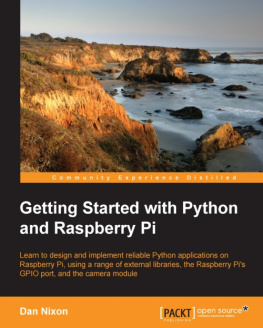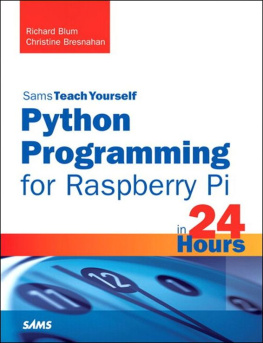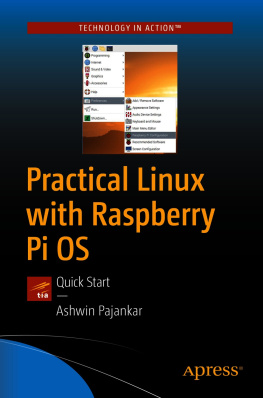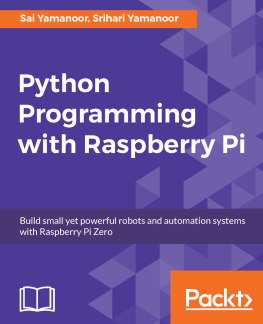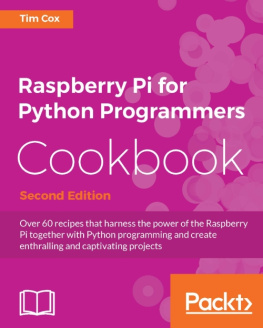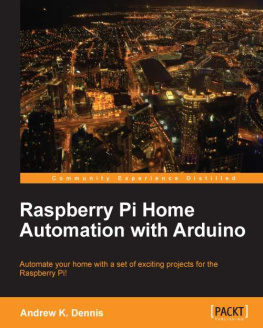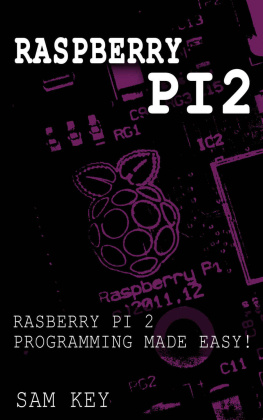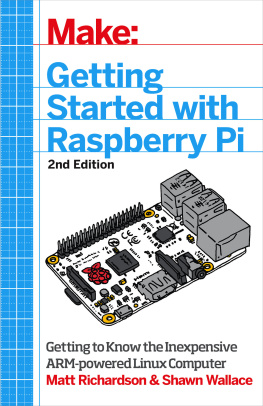Larry Lutz - Coding: The Bible: 2 Manuscripts - Python and Raspberry PI
Here you can read online Larry Lutz - Coding: The Bible: 2 Manuscripts - Python and Raspberry PI full text of the book (entire story) in english for free. Download pdf and epub, get meaning, cover and reviews about this ebook. year: 2018, genre: Home and family. Description of the work, (preface) as well as reviews are available. Best literature library LitArk.com created for fans of good reading and offers a wide selection of genres:
Romance novel
Science fiction
Adventure
Detective
Science
History
Home and family
Prose
Art
Politics
Computer
Non-fiction
Religion
Business
Children
Humor
Choose a favorite category and find really read worthwhile books. Enjoy immersion in the world of imagination, feel the emotions of the characters or learn something new for yourself, make an fascinating discovery.

- Book:Coding: The Bible: 2 Manuscripts - Python and Raspberry PI
- Author:
- Genre:
- Year:2018
- Rating:5 / 5
- Favourites:Add to favourites
- Your mark:
Coding: The Bible: 2 Manuscripts - Python and Raspberry PI: summary, description and annotation
We offer to read an annotation, description, summary or preface (depends on what the author of the book "Coding: The Bible: 2 Manuscripts - Python and Raspberry PI" wrote himself). If you haven't found the necessary information about the book — write in the comments, we will try to find it.
PYTHON & RASPBERRY PI
Buy the Paperback version of this book, and get the Kindle eBook version included for FREE!
Do You Want to Become An Expert Of PYTHON AND RASPBERRY PI 3 ?? Get this Book and Follow My Step by Step Explanations! Click Add To Cart Now!
Python language is widely used all over the globe. Its popularity is because of its characteristics and many advantages attached to it. Some of the major advantages are as follows:
- Easy-to-Learn, Read and Maintain
- A handful of Standard Libraries
- Easy development and Test
- Extendable to Low-Level languages
This book/course is for all those who are willing to build interesting projects with the Raspberry Pi Platform. You can start with this book without any knowledge of programming or electronicsor Linux. All of the projects in this book are explained step by step with clear instructions.
Also if you want to start with embedded Linux using the Raspberry Pi board and will go deep into its specifications, electronics and sensors in general so this book for you.
This book contains illustrations and step-by-step explanations with bullet points and exercises for easy and enjoyable learning.Benefits of reading this book that youre not going to find anywhere else:
- Introduction to Python
- Utilities of Python
- Configuring Python Environment
- Basic of Python
- Variables, Strings and Operators
- Mathematical Aspects
- Data Types
- Lists and Tuples
- Dictionaries
- Control Statements
- Functions and Modules
- File Input - Output
- Object-oriented Programming
- Code optimization
- Useful python libraries
- Introduction to Raspberry Pi
- Getting Started with Raspberry Pi
- Introduction to Embedded Linux
- Working with Electronics
- Programming on Raspberry Pi
- Input and output on Raspberry pi
- Introduction to communication Protocols
- Python Programming for Raspberry Pi
- Final Project
Dont miss out on this new step by step guide to Python and Raspberry PI. All you need to do is scroll up and click on the BUY NOW button to learn all about it!
Larry Lutz: author's other books
Who wrote Coding: The Bible: 2 Manuscripts - Python and Raspberry PI? Find out the surname, the name of the author of the book and a list of all author's works by series.

